We may receive a commission when you use our affiliate links. However, this does not impact our recommendations.
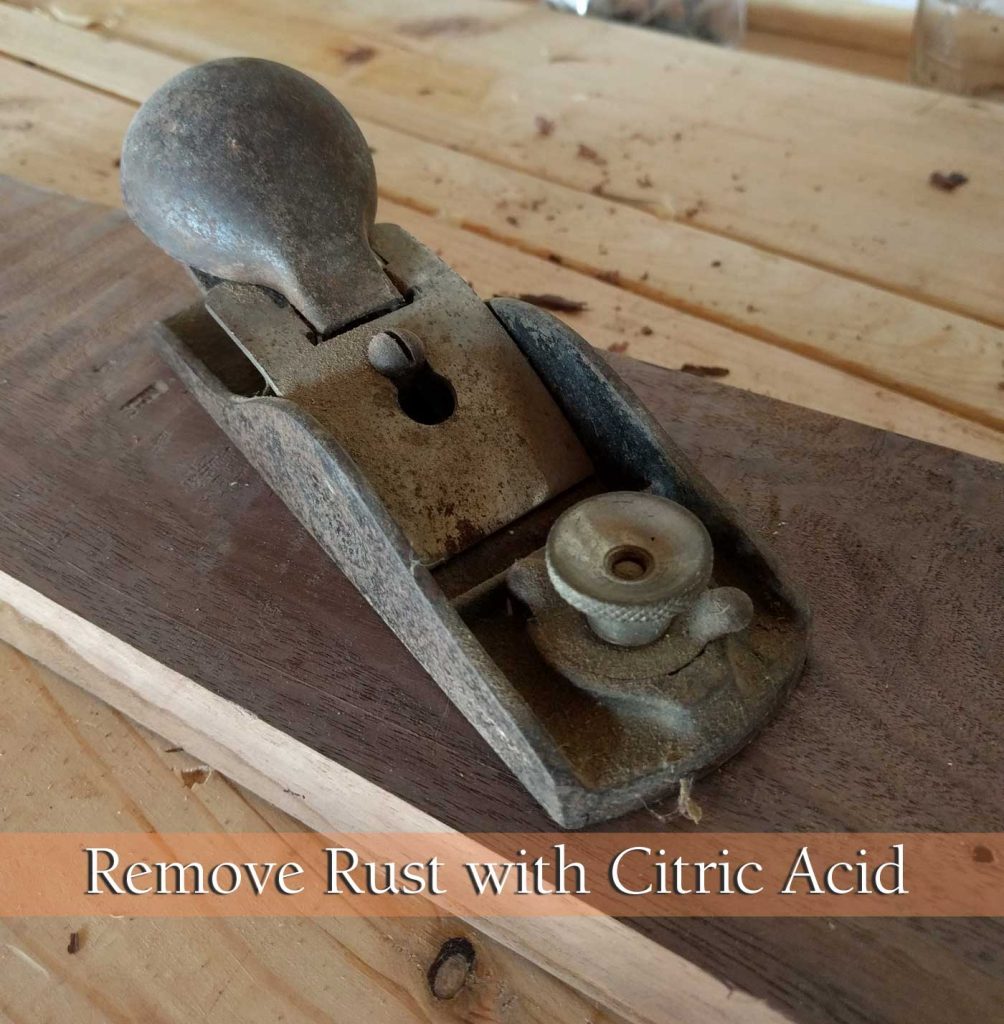
Generally speaking, I like tools: power tools, hand tools, woodworking tools, farm tools. Tools.
Also generally speaking, I like old things. I’m no Luddite (I’m very fond of Netflix) but am much more likely to smile over a thrift store treasure than a new iPhone. Be it a hat, lamp or hardback, old things have an ontological resonance that gets my neurons firing. Picturing all the sets of hands holding an object older than I am, I’m prone to a goosebump or two.
Which is what makes a trip through my wife’s Uncle Jim’s basement such a pleasing experience – the labyrinthine space is filled floor to ceiling with old stuff. And since Uncle Jim is a woodworker, a gruff engineer who built his own house in the woods, he has a lot of tools – a lot of old tools. So when the other day, winding through the space looking for an oil sign he wanted to show us, Uncle Jim reached into a bin and handed me a knuckle joint block plane, I got very excited.
“It’s not old,” he said. Oh well. Even at first glance, the adjustable throat told me it was better than my home store Stanley. (Full disclosure: Part of why I like old stuff is the price point – I lust after those shiny new hand planes, but I have three children prone to frequent and expensive injuries, so high-end tools are sadly out of my reach.)
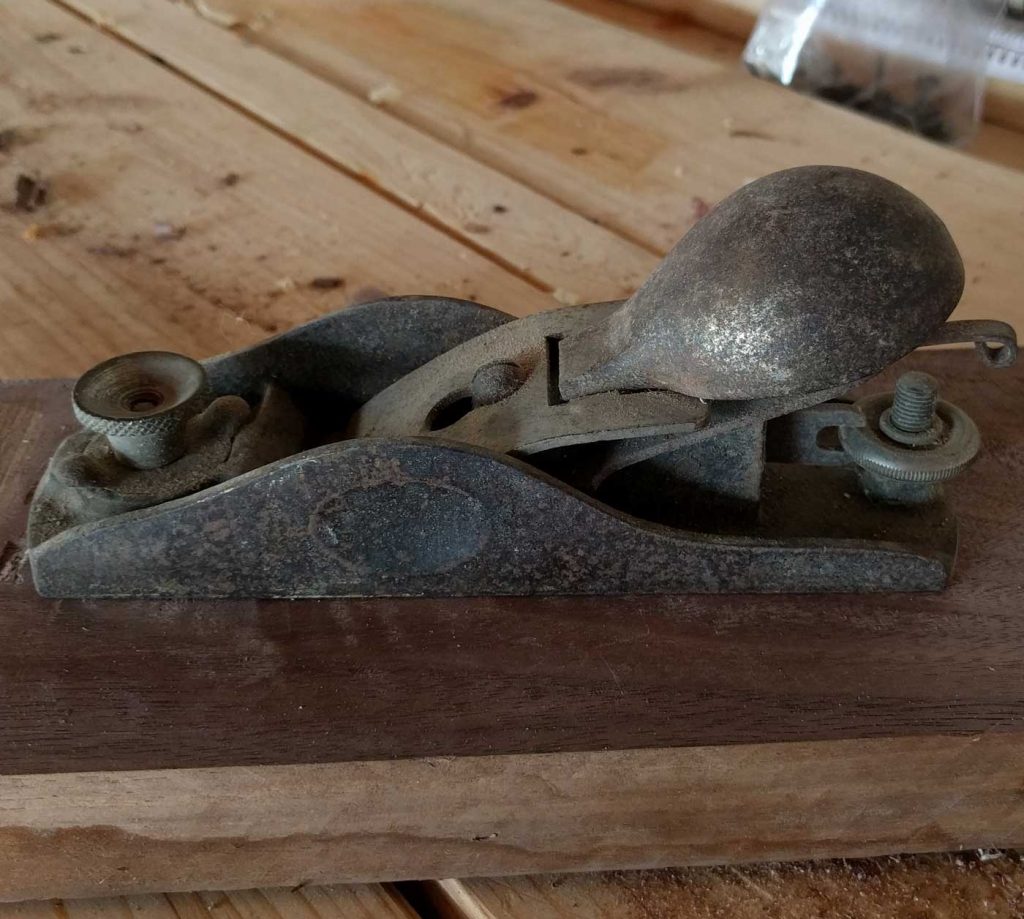 A rusty, dirty block plane.
A rusty, dirty block plane.
As you can see, it wasn’t in ideal shape. Not just dirty, but those who-knows-how-many years spent in the basement had also corroded and stuck the components together with rust. It was almost as bad as the Stanley Bed Rock 605 Uncle Jim brought me earlier this year, literally pulled from the ground in an old, dirt-floor farmhouse he’d found himself in at some point (this happens to Uncle Jim – we don’t ask too many questions). After I cleaned and tuned up that jack plane, he asked how I did it. Then he handed me a battered no. 4.
The answer? For me (and many of our contributors, so maybe for you too) it’s citric acid. I buy it as a powder at the local health-food store for less than two bucks. What’s citric acid? Simply put, it’s the stuff that makes your face squinch up when you bite into a lemon slice (not simply put, it’s C6H8O7). It’s a very common food additive, an acidity balancer for canning and what makes lemon-lime soda taste the way it does. Citric acid is also an effective cleaning agent, commonly found in detergents with pictures of lemons on the label.
There are few things in life I claim “expert” status in – pig castration is one, rust removal is not. But in this job I have access to valuable resources, such as Christopher Schwarz’s Super-Tune a Handplane, that cover a variety of rust-removal methods. You could use vinegar, but I find it slow. I’ve tried Evapo-Rust, which does well but costs more than two dollars. I haven’t tried toilet bowl cleaner because I consider it unwise to keep dangerous chemicals in a house with my particular set of children. But citric acid is cheap and safe and it works, so that’s what I use to bring rusty, old planes from Uncle Jim’s basement like this one back to life. Here’s how.
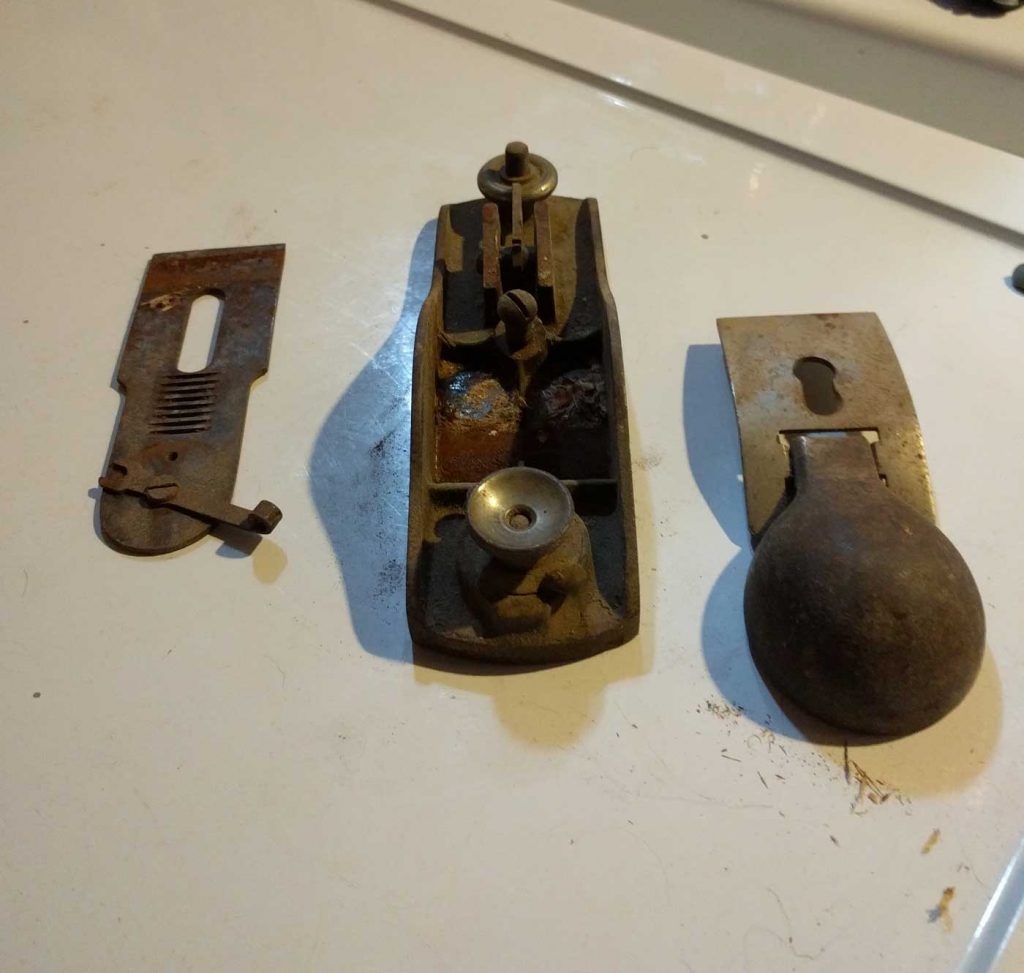 Disassembly reveals the rust’s full extent.
Disassembly reveals the rust’s full extent.
First, I disassembled the tool – carefully, as I’m overdue a tetanus booster, but also because something might be hiding in the shadows (I’ve seen my share of black widows on the family farm; also, you may want to wear rubber gloves if you have sensitive skin, and eye protection is always a good idea). I wash everything with dishwashing detergent to remove grime down to the rust, then mix up a batch of warm water – the exact amount is “some” – and a tablespoon of citric acid in a plastic tub which, if you’ve seen Breaking Bad, you’ll understand won’t dissolve. Then I drop everything into the mixture, tilting the bath if necessary to cover the larger parts, and walk away. Oh, and I usually put the bath on top of the washing machine (which is always running – three kids) to agitate the bath. I have no idea if this adds anything to the process, but it sounds plausible that it would, right?
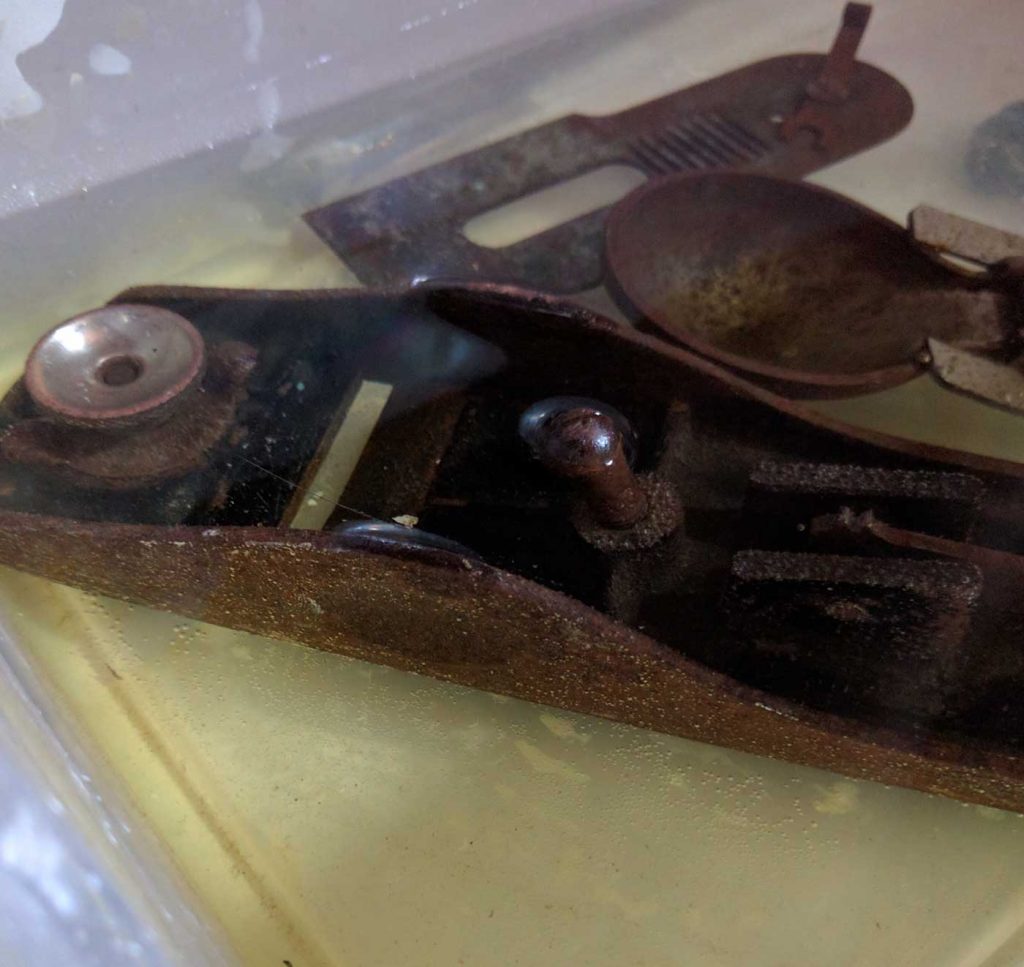 The bubbles mean it’s working.
The bubbles mean it’s working.
Bubbles form on the metal after fifteen minutes or so (maybe longer if you’re not using a washing machine, who knows?), and the water starts to yellow. I’m impatient and usually take my copper wire to it too soon, but it has to be scrubbed a couple of times anyway – I abrade every surface, drawing a rusty sludge, then run some hot water over it. I’m always amazed at how much metal I see even after the first scrub. The brand name appeared on the iron, too: FULTON. This is an old (old!) Sears tool, probably made by Sargent as an economy brand. I won’t pay off my mortgage with an eBay posting, but it’s a free plane, so I don’t complain.
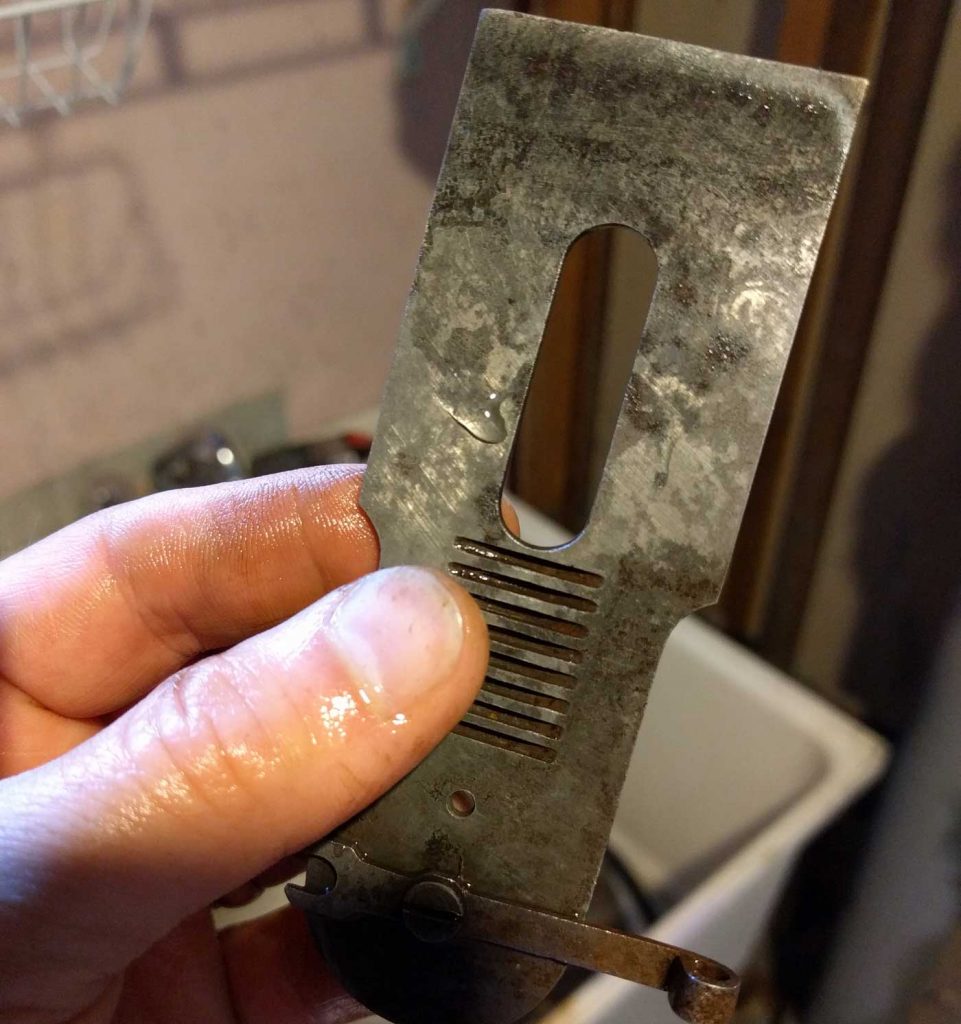 A lot of rust comes off the cutter right away – but I know it can be cleaner.
A lot of rust comes off the cutter right away – but I know it can be cleaner.
Back go the parts into the citric acid bath, where I usually leave it for a handful of hours after becoming distracted by one of my kids injuring his- or herself. You don’t want to leave it in there for weeks, though – citric acid works because it dissolves rust faster than metal but, given time, it could start to eat away at the tool itself. When I finally do return to the disassembled plane, the water is very yellow. Taking the copper wire to it this time, almost every bit of rust disappears beneath the hot water. A bit of pointed scrubbing usually removes any stubborn patches.
When satisfied (I really don’t mind a little bit of character-building rust), I towel-dry the piece thoroughly and set it aside. Then I coat all the pieces in oil (I use baby oil, i.e., mineral oil…it’s inexpensive), reassemble the tool and post a picture to Instagram.
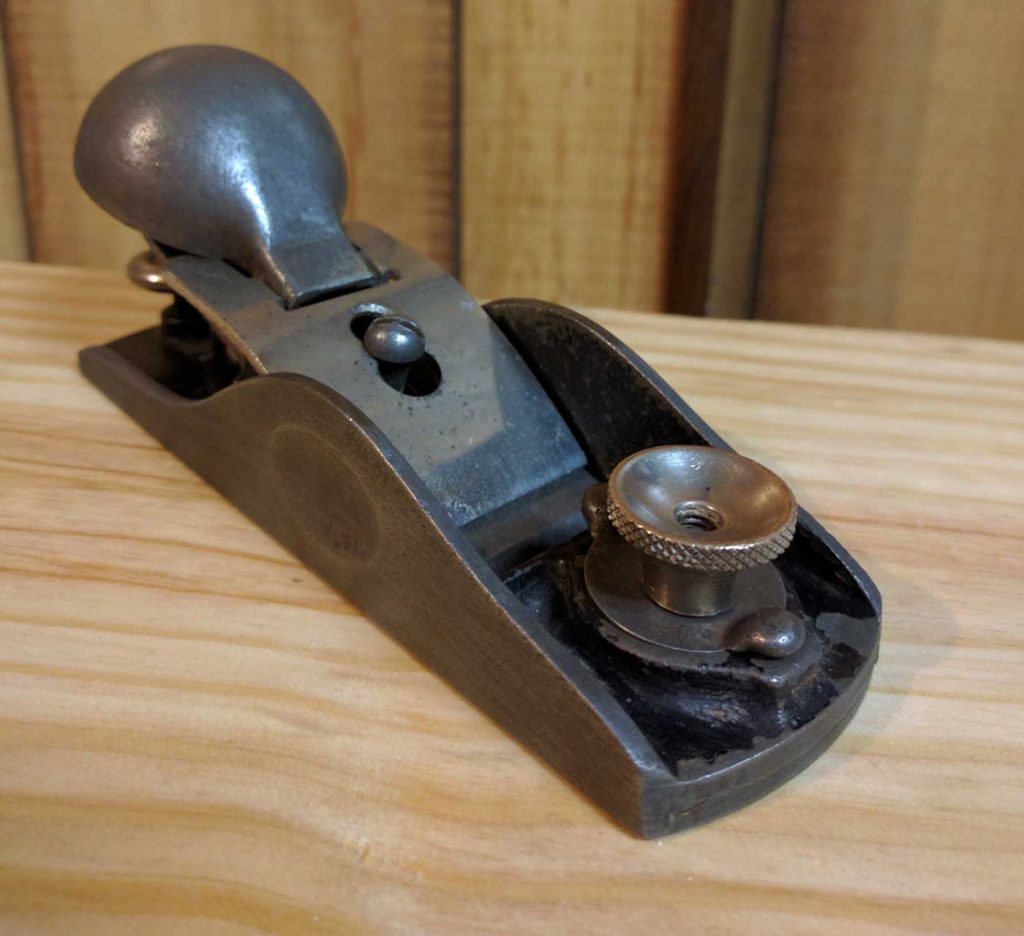 Looks good, huh? Note the bed’s japanning is unaffected by the citric acid – what’s missing is wear. Don’t note my wood-paneled basement walls.
Looks good, huh? Note the bed’s japanning is unaffected by the citric acid – what’s missing is wear. Don’t note my wood-paneled basement walls.
A clean tool looks nice, but it still needs to be tuned up (back to Super-Tune a Handplane for this). When the plane is clean, tuned and sharpened, I set it to some pine – but I don’t like to waste wood, so I used this rehabbed Fulton to make some octagonal legs for a little side table.
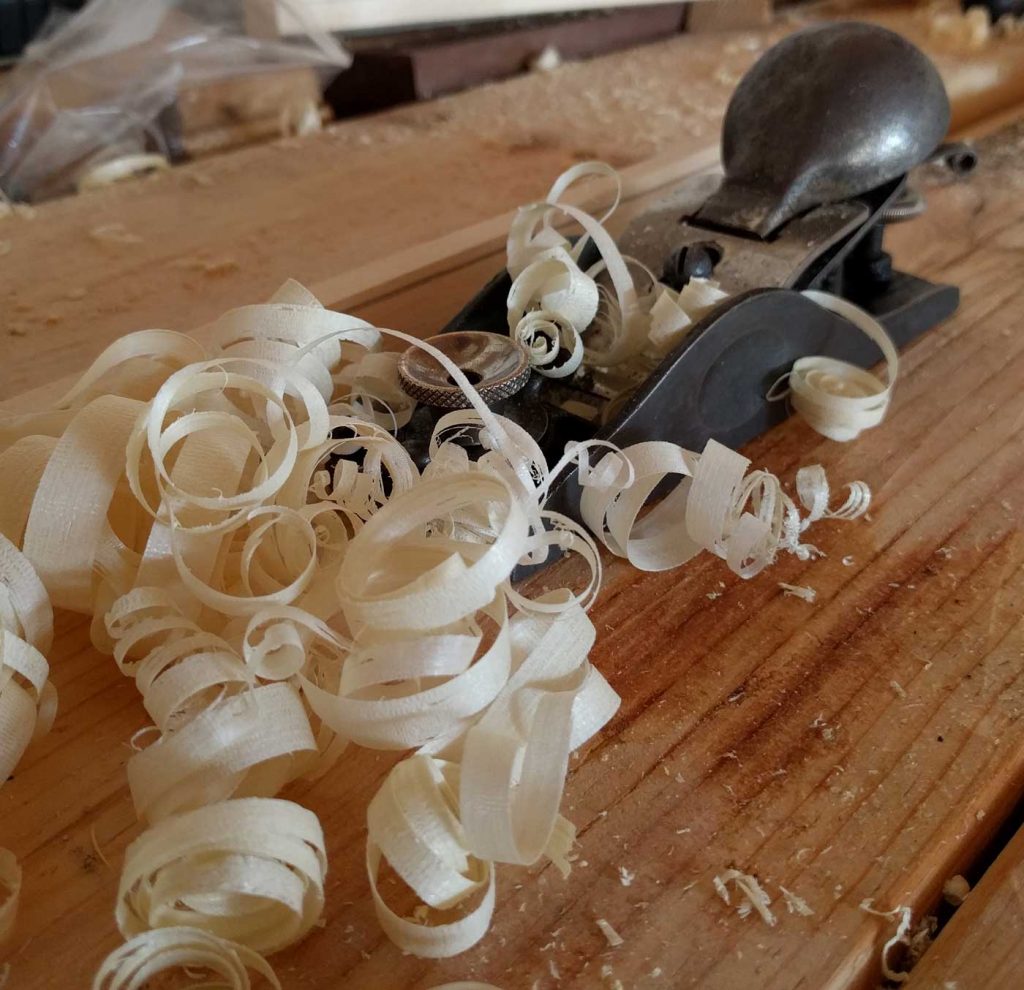
Here are some supplies and tools we find essential in our everyday work around the shop. We may receive a commission from sales referred by our links; however, we have carefully selected these products for their usefulness and quality.








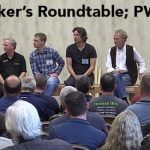
Is there a “strength” or “concentration” to the citric acid powder you buy at the health food store?
Or is it jut 100% citric acid?
Thanks!
Excellent article.
One clarification needs to be made. The following statement is incorrect. “Though, in practice, the acid should evaporate long before it has time to eat the metal.” Citric acid evaporates extremely slowly due to boiling point of 590F. It will solubilize metal iron / steel long before it evaporates. I’m a chemist with personal experience in this area. It cost the company I used to work for about $50 million dollars to replace steel equipment partially dissolved by citric acid.